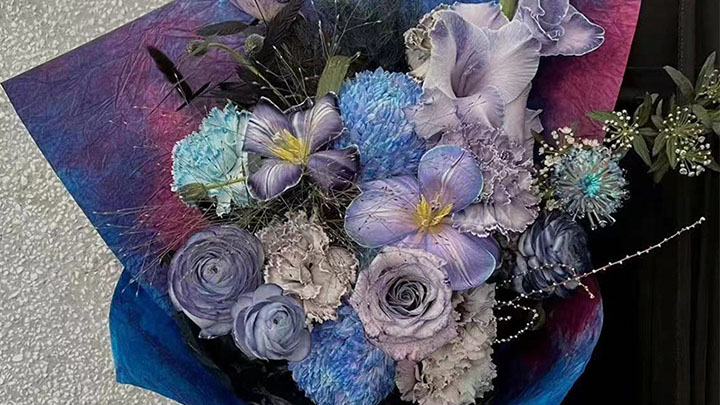Color Matching Rules for Floral Arrangements
Creating a visually appealing floral arrangement involves more than just choosing beautiful flowers; it also requires an understanding of color theory and effective color matching. The right color combinations can enhance the overall aesthetic of the bouquet, setting the mood and complementing the occasion. Here’s a guide to color matching rules for floral arrangements:
1. Understanding the Color Wheel
The color wheel is a fundamental tool for color matching. It consists of primary colors (red, blue, yellow), secondary colors (green, orange, purple), and tertiary colors. By understanding the relationships between these colors, you can create harmonious floral arrangements.
2. Complementary Colors
Complementary colors are located opposite each other on the color wheel. For example, red and green or blue and orange. When used together, these colors create a high-contrast and vibrant effect. In floral arrangements, pairing complementary colors can make each flower stand out and grab attention.
3. Analogous Colors
Analogous colors are adjacent to each other on the color wheel, such as blue, blue-green, and green. These colors create a harmonious and soothing effect when used together. In floral arrangements, analogous colors provide a sense of unity and can create a cohesive and calming look.
4. Monochromatic Colors
Monochromatic color schemes involve using different shades, tints, and tones of a single color. For example, various shades of pink. This approach creates a sophisticated and elegant look. In floral arrangements, monochromatic schemes can emphasize the beauty of a single color and create a clean, refined appearance.
5. Triadic Colors
Triadic color schemes involve using three colors that are evenly spaced around the color wheel, such as red, yellow, and blue. This approach provides a balanced and vibrant look. In floral arrangements, triadic colors can add depth and interest while maintaining harmony.
6. Neutral Colors
Neutral colors like white, black, gray, and beige can be used to balance and complement other colors. They are versatile and can act as a backdrop to make bright or bold colors stand out. In floral arrangements, incorporating neutral colors can add sophistication and prevent the bouquet from becoming too overwhelming.
7. Seasonal Color Schemes
Seasonal color schemes can enhance the relevance of the floral arrangement. For example, warm colors like orange, red, and yellow are often associated with autumn, while cool colors like blue and white are popular in winter. By aligning your color choices with the season, you can create arrangements that feel appropriate and timely.
8. Occasion-Based Color Choices
Different occasions may call for specific color schemes. For example, pastels are often used for weddings and baby showers, while bold colors are suitable for celebrations and parties. Understanding the context and purpose of the arrangement can guide your color choices to match the occasion.
9. Personal Preferences
Ultimately, personal preferences play a significant role in color selection. If you know the recipient’s favorite colors or the theme of the event, incorporating these elements can make the arrangement more meaningful and personalized.
Conclusion
Color matching in floral arrangements is an art that combines knowledge of color theory with an understanding of the occasion and personal preferences. By applying these color matching rules, you can create beautiful and harmonious arrangements that enhance the visual appeal and impact of your floral designs. Whether you opt for complementary contrasts or soothing analogous hues, thoughtful color choices can elevate any bouquet.




